Discover and Use Competitor Key phrases

Competitor key phrases are the key phrases your rivals rank for in Google’s search outcomes. They might rank organically or pay for Google Advertisements to rank within the paid outcomes.
Understanding your rivals’ key phrases is the best type of key phrase analysis. In case your rivals rank for or goal explicit key phrases, it is likely to be price it so that you can goal them, too.
There is no such thing as a option to see your rivals’ key phrases with out a instrument like Ahrefs, which has a database of key phrases and the websites that rank for them. So far as we all know, Ahrefs has the biggest database of these keywords.
How to find all the keywords your competitor ranks for
- Go to Ahrefs’ Site Explorer
- Enter your competitor’s domain
- Go to the Organic keywords report

The report is sorted by traffic to show you the keywords sending your competitor the most visits. For example, Mailchimp gets most of its organic traffic from the keyword “mailchimp.”


Since you’re unlikely to rank for your competitor’s brand, you might want to exclude branded keywords from the report. You can do this by adding a Keyword > Doesn’t contain filter. In this example, we’ll filter out keywords containing “mailchimp” or any potential misspellings:
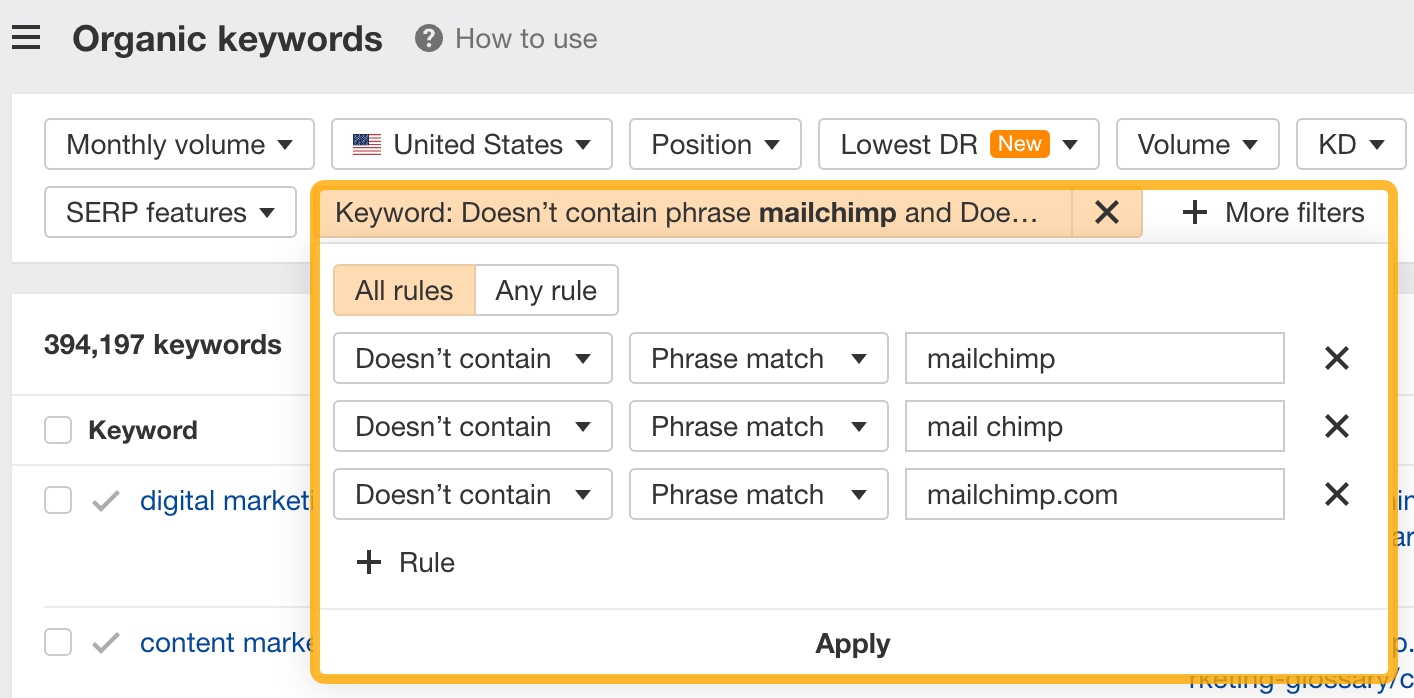

If you’re a new brand competing with one that’s established, you might also want to look for popular low-difficulty keywords. You can do this by setting the Volume filter to a minimum of 500 and the KD filter to a maximum of 10.
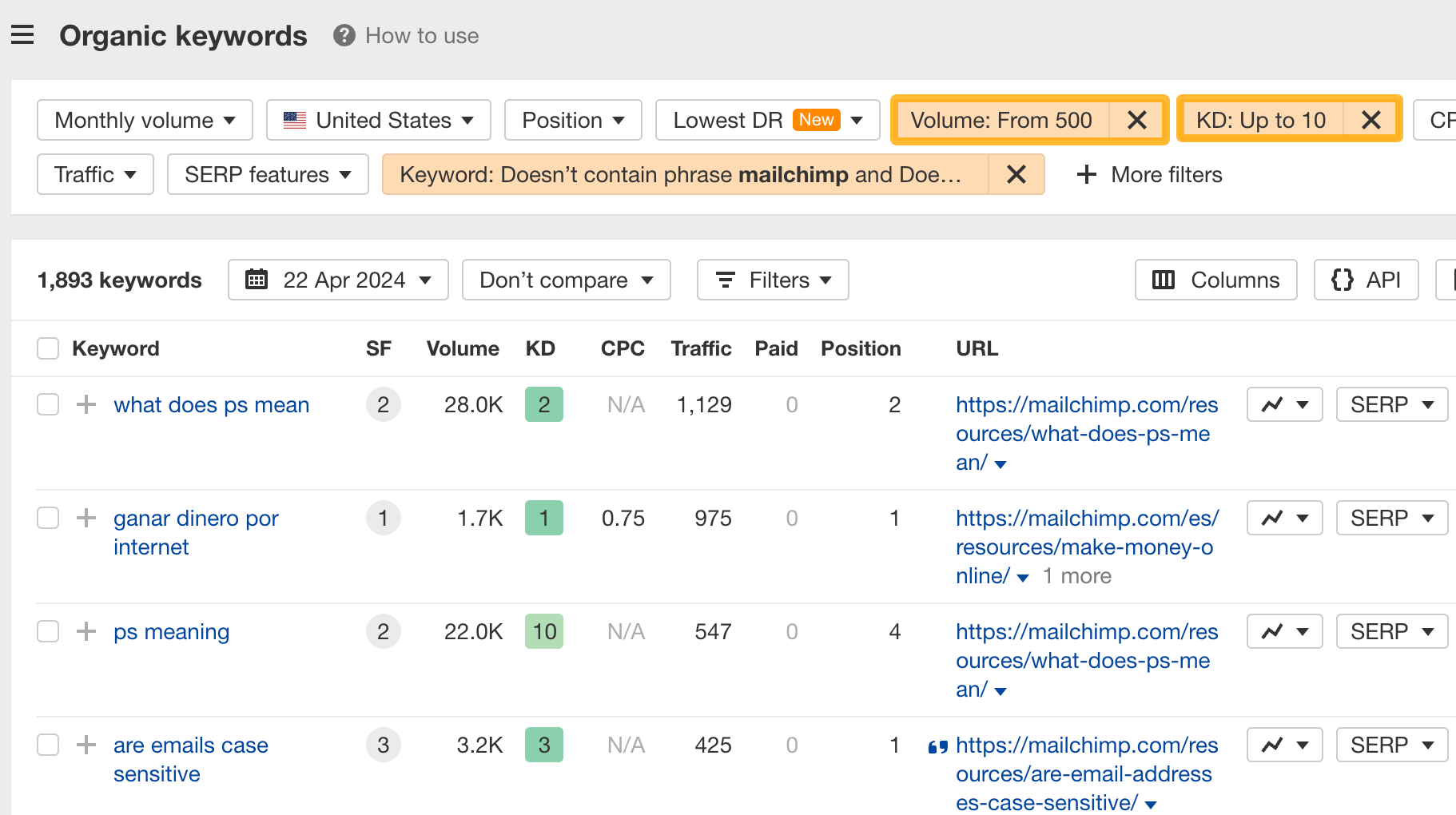

How to find keywords your competitor ranks for, but you don’t
- Go to Competitive Analysis
- Enter your domain in the This target doesn’t rank for section
- Enter your competitor’s domain in the But these competitors do section


Hit “Show keyword opportunities,” and you’ll see all the keywords your competitor ranks for, but you don’t.
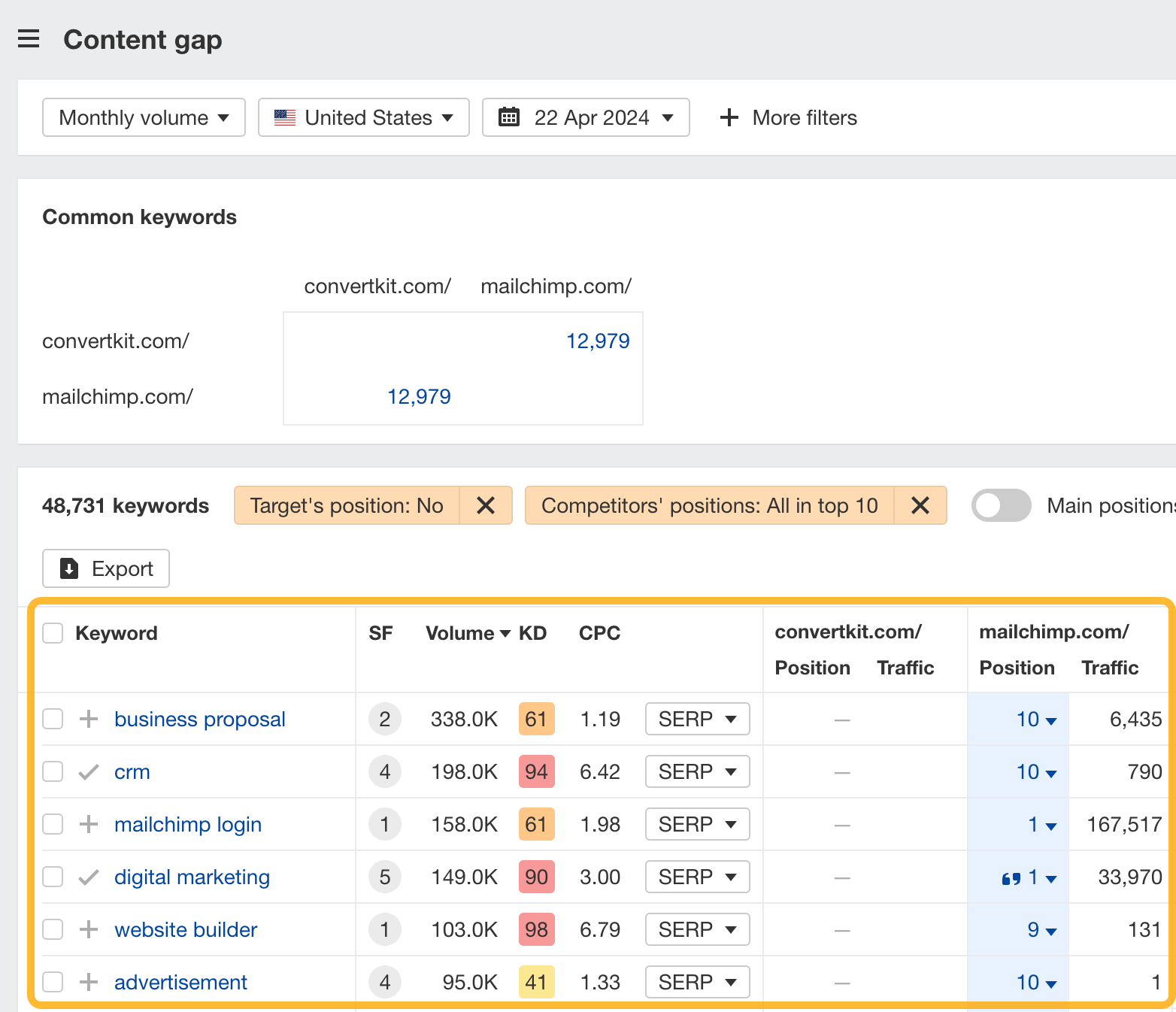

You can also add a Volume and KD filter to find popular, low-difficulty keywords in this report.
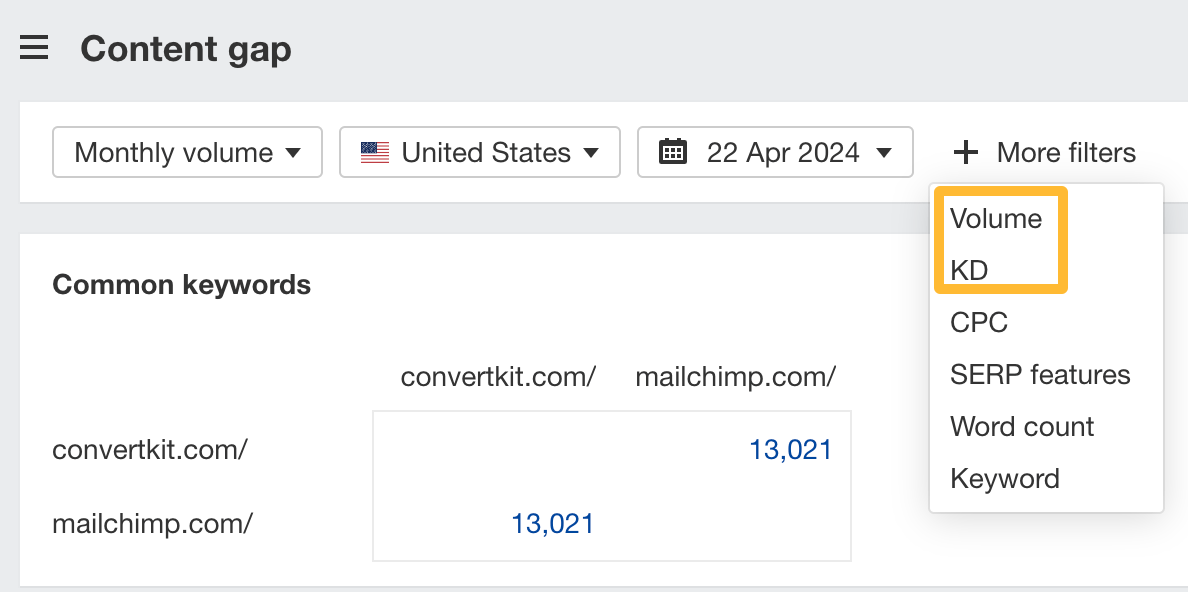

How to find keywords multiple competitors rank for, but you don’t
- Go to Competitive Analysis
- Enter your domain in the This target doesn’t rank for section
- Enter the domains of multiple competitors in the But these competitors do section
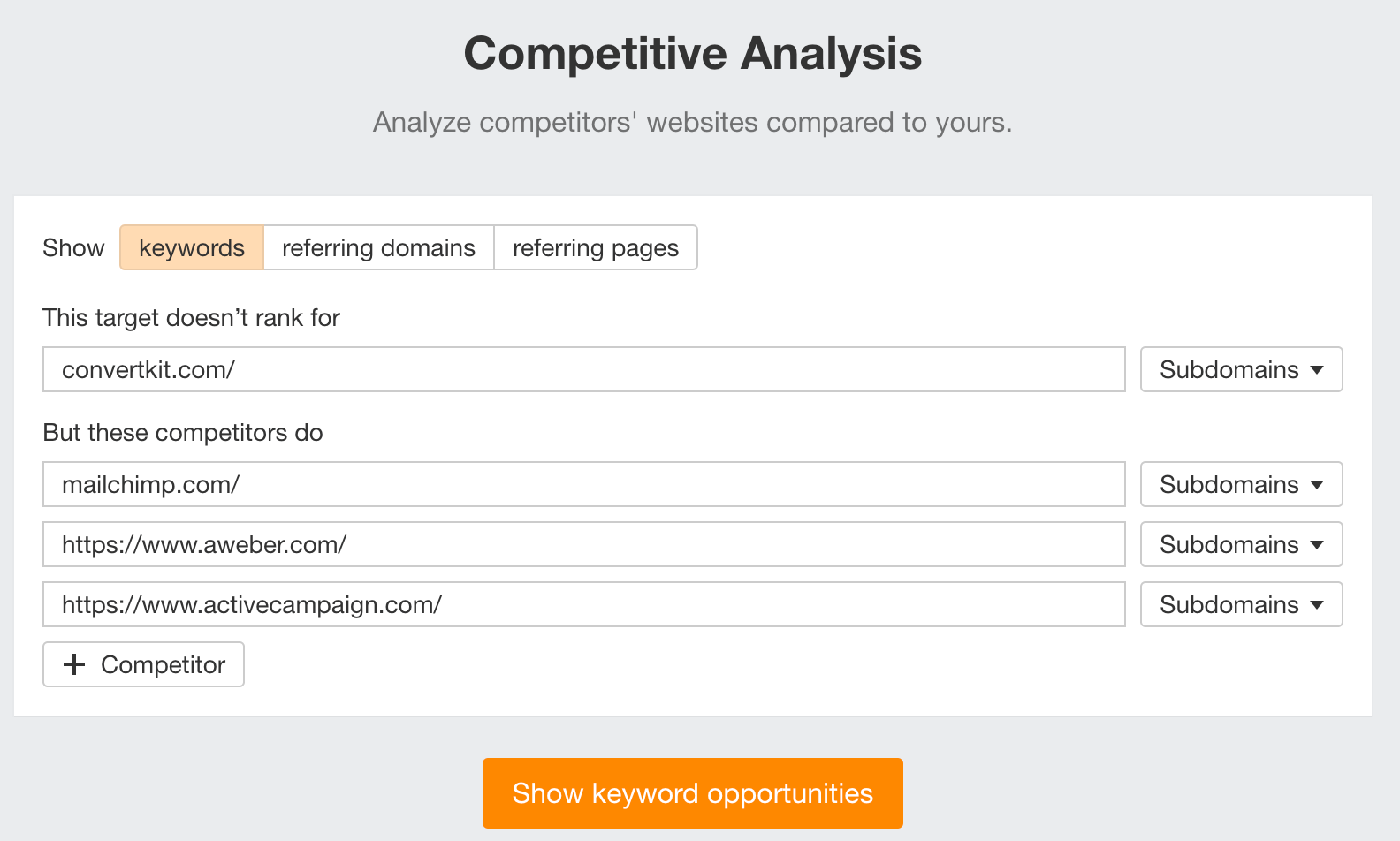

You’ll see all the keywords that at least one of these competitors ranks for, but you don’t.


You can also narrow the list down to keywords that all competitors rank for. Click on the Competitors’ positions filter and choose All 3 competitors:
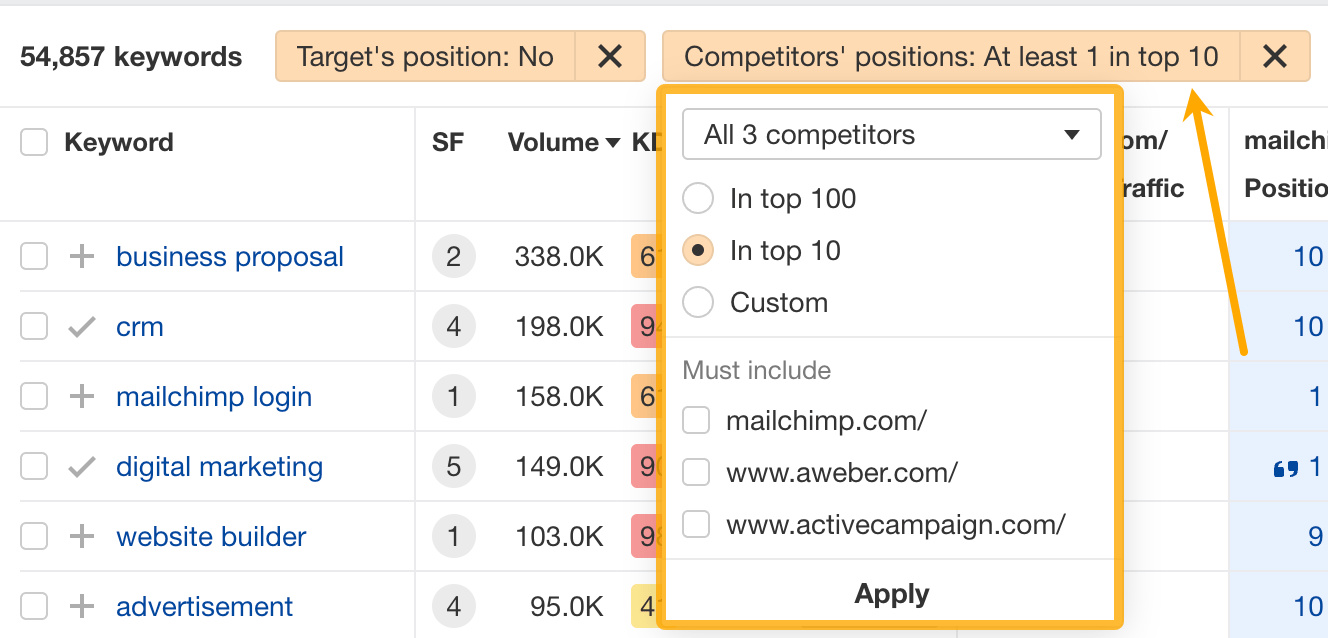

- Go to Ahrefs’ Site Explorer
- Enter your competitor’s domain
- Go to the Paid keywords report


This report shows you the keywords your competitors are targeting via Google Ads.
Since your competitor is paying for traffic from these keywords, it may indicate that they’re profitable for them—and could be for you, too.
what key phrases your rivals are rating for or bidding on. However what do you do with them? There are mainly three choices.
1. Create pages to focus on these key phrases
You’ll be able to solely rank for key phrases when you have content material about them. So, essentially the most simple factor you are able to do for rivals’ key phrases you need to rank for is to create pages to focus on them.
Nevertheless, earlier than you do that, it’s price clustering your competitor’s key phrases by Guardian Subject. This may group key phrases that imply the identical or related issues so you may goal all of them with one web page.
Right here’s how you can do that:
- Export your competitor’s key phrases, both from the Natural Key phrases or Content material Hole report
- Paste them into Key phrases Explorer
- Click on the “Clusters by Guardian Subject” tab
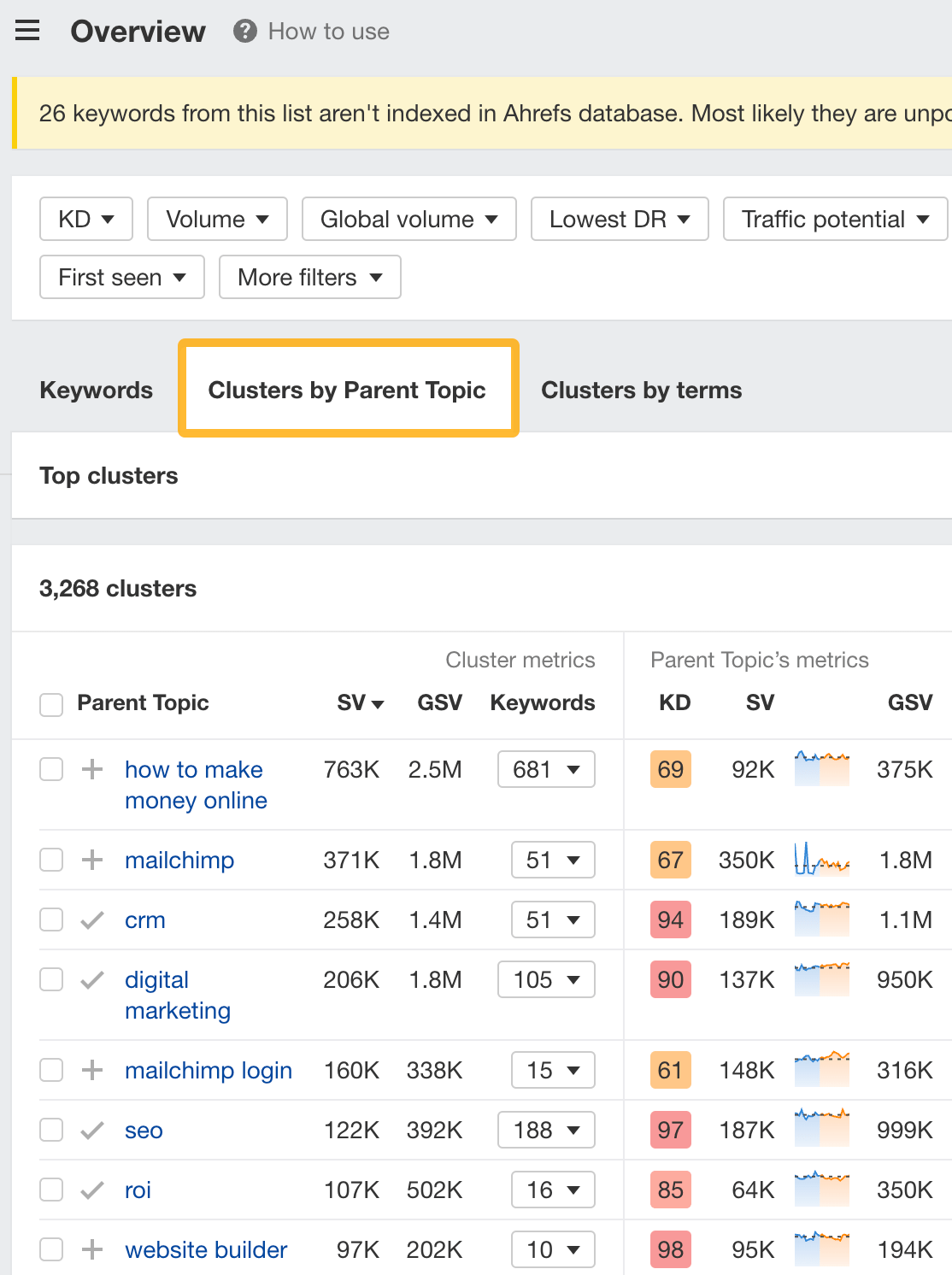

For instance, MailChimp ranks for key phrases like “what’s digital advertising and marketing” and “digital advertising and marketing definition.” These and plenty of others get clustered beneath the Guardian Subject of “digital advertising and marketing” as a result of folks trying to find them are all in search of the identical factor: a definition of digital advertising and marketing. You solely must create one web page to probably rank for all these key phrases.
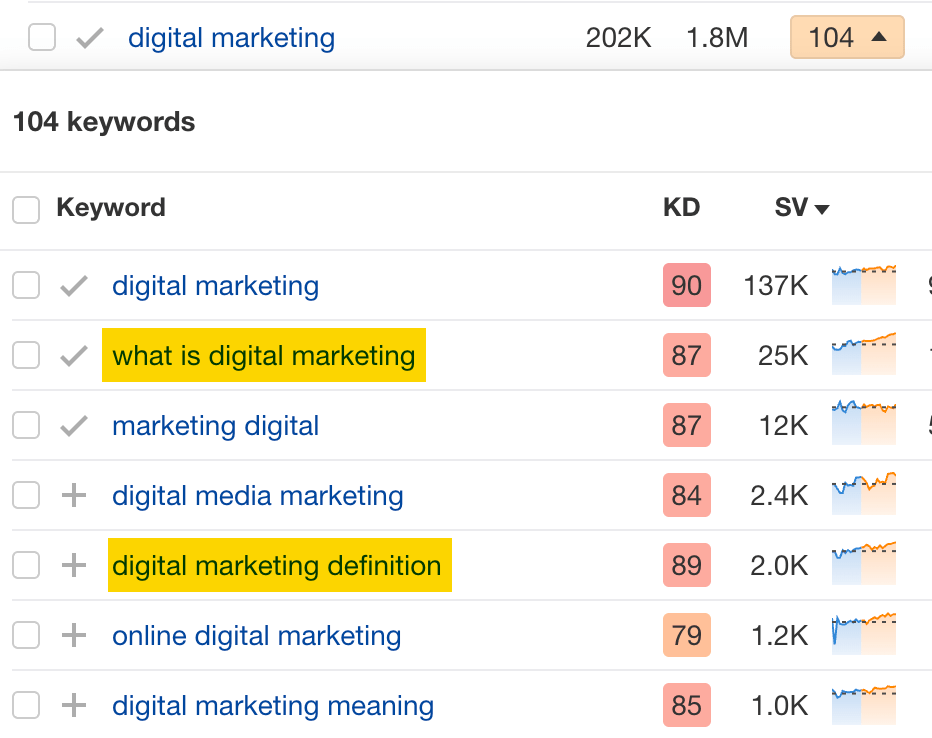

2. Optimize current content material by filling subtopics
You don’t at all times must create new content material to rank for rivals’ key phrases. Generally, you may optimize the content material you have already got to rank for them.
How are you aware which key phrases you are able to do this for? Strive this:
- Export your competitor’s key phrases
- Paste them into Key phrases Explorer
- Click on the “Clusters by Guardian Subject” tab
- Search for Guardian Subjects you have already got content material about
For instance, if we analyze our competitor, we will see that seven key phrases they rank for fall beneath the Guardian Subject of “press launch template.”


If we search our web site, we see that we have already got a web page about this subject.


If we click on the caret and examine the key phrases within the cluster, we see key phrases like “press launch instance” and “press launch format.”


To rank for the key phrases within the cluster, we will in all probability optimize the web page we have already got by including sections concerning the subtopics of “press launch examples” and “press launch format.”
3. Goal these key phrases with Google Advertisements
Paid key phrases are the only—look via the report and see if there are any related key phrases you would possibly need to goal, too.
For instance, Mailchimp is bidding for the key phrase “how you can create a publication.”


Should you’re ConvertKit, you may additionally need to goal this key phrase because it’s related.
Should you determine to focus on the identical key phrase by way of Google Advertisements, you may hover over the magnifying glass to see the adverts your competitor is utilizing.


You can even see the touchdown web page your competitor directs advert site visitors to beneath the URL column.


Study extra
Take a look at extra tutorials on how you can do competitor key phrase evaluation:







